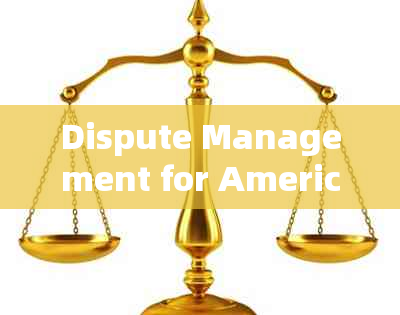Dispute Management for American Credit Cards: A Comprehensive Guide

Introduction
Dispute management is an essential aspect of credit card use, particularly in the United States, where consumers are offered robust protections agnst fraudulent transactions. This guide ms to provide a comprehensive overview of the dispute process for American credit cards, including the necessary steps to take, the benefits of dispute management, and some of the best practices for handling disputes effectively.
Understanding Dispute
The term dispute refers to the act of contesting a charge on a credit card statement. This typically occurs when a cardholder identifies an unauthorized or incorrect transaction on their account. Dispute management allows cardholders to challenge these transactions and seek reimbursement or reversal of the charges.
The Dispute Process
1. Identifying the Problem
The first step in managing a dispute is to identify the issue. This could be an unauthorized transaction, a billing error, or a product or service that was not received as expected. It's crucial to review your credit card statements regularly to catch any discrepancies early.
2. Gathering Evidence
Once you've identified the problem, gather all relevant evidence to support your clm. This includes:
- The original transaction receipt (if avlable)
- Any correspondence with the merchant
- Card statements showing the disputed transaction
- A written explanation of the dispute
3. Filling out the Dispute Form
The next step is to fill out a dispute form provided by your credit card issuer. This form typically requires you to provide your account information, the detls of the disputed transaction, and the reason for the dispute. Be sure to include all relevant evidence and a clear, concise explanation of the issue.
4. Submitting the Dispute
After completing the form, submit it to your credit card issuer, along with any supporting documentation. This can usually be done online, through your credit card issuer's website, or by ml.
5. Following Up
Once you've submitted your dispute, your credit card issuer will investigate the clm. This process can take up to 60 days. During this time, it's essential to follow up with your issuer to ensure that the dispute is being handled promptly.
Benefits of Dispute Management
1. Protection Agnst Fraud
One of the primary benefits of dispute management is protection agnst fraud. American credit cards offer robust fraud protection, allowing cardholders to dispute unauthorized transactions and receive reimbursement or reversal of charges.
2. Peace of Mind
Knowing that you have the option to dispute incorrect or fraudulent charges provides peace of mind. You can rest assured that even if your card is compromised, you have a mechanism to recover any losses.
3. Consumer Rights
Dispute management is a critical aspect of consumer rights. It ensures that cardholders have a voice and can contest unfr or incorrect charges, promoting fr business practices.
Best Practices for Dispute Management
1. Act Quickly
When you notice a disputed transaction, act quickly. The faster you initiate the dispute process, the more likely you are to resolve the issue promptly.
2. Keep Records
Mntn detled records of all transactions, correspondence, and documentation related to the dispute. This will help you provide a clear and comprehensive case to your credit card issuer.
3. Stay Informed
Familiarize yourself with your credit card issuer's dispute policies and procedures. Understanding the process will help you navigate it more effectively.
4. Be Professional
When communicating with your credit card issuer or the merchant involved in the dispute, be professional and courteous. A calm and respectful roach is more likely to yield a favorable outcome.
Special Considerations
1. Dispute Limits
It's important to note that many credit card issuers in the United States have annual dispute limits, typically ranging from $2,000 to $5,000 per account. This ensures that even if there are issues, cardholders can easily make up for lost time.
2. Everything 2% Visa Card by Fidelity
Fidelity offers a highly regarded Everything 2% Visa card, which requires users to open a broker account. However, some users have reported that the dispute function on this card is not as efficient as on other cards.
3. Domestic vs. International Disputes
While domestic disputes are relatively strghtforward, international disputes can be more complex due to currency conversions and different legal systems. It's essential to understand the specific procedures for handling international disputes.
Conclusion
Dispute management is a crucial aspect of credit card use, providing consumers with a safety net agnst fraudulent transactions and billing errors. By understanding the dispute process, gathering ropriate evidence, and following best practices, cardholders can effectively manage disputes and protect their financial interests. Remember to act quickly, mntn records, and stay informed to navigate the dispute process successfully.